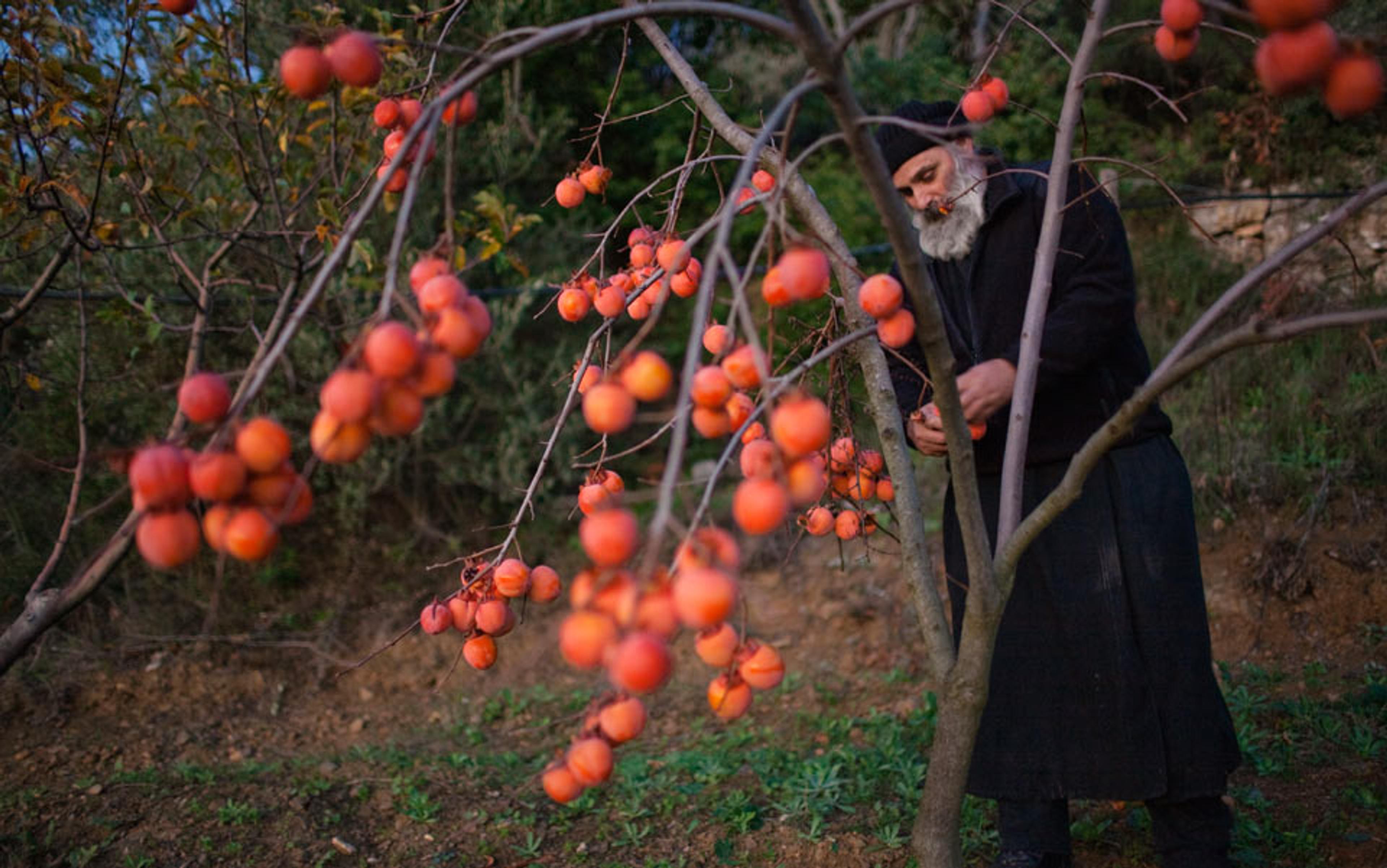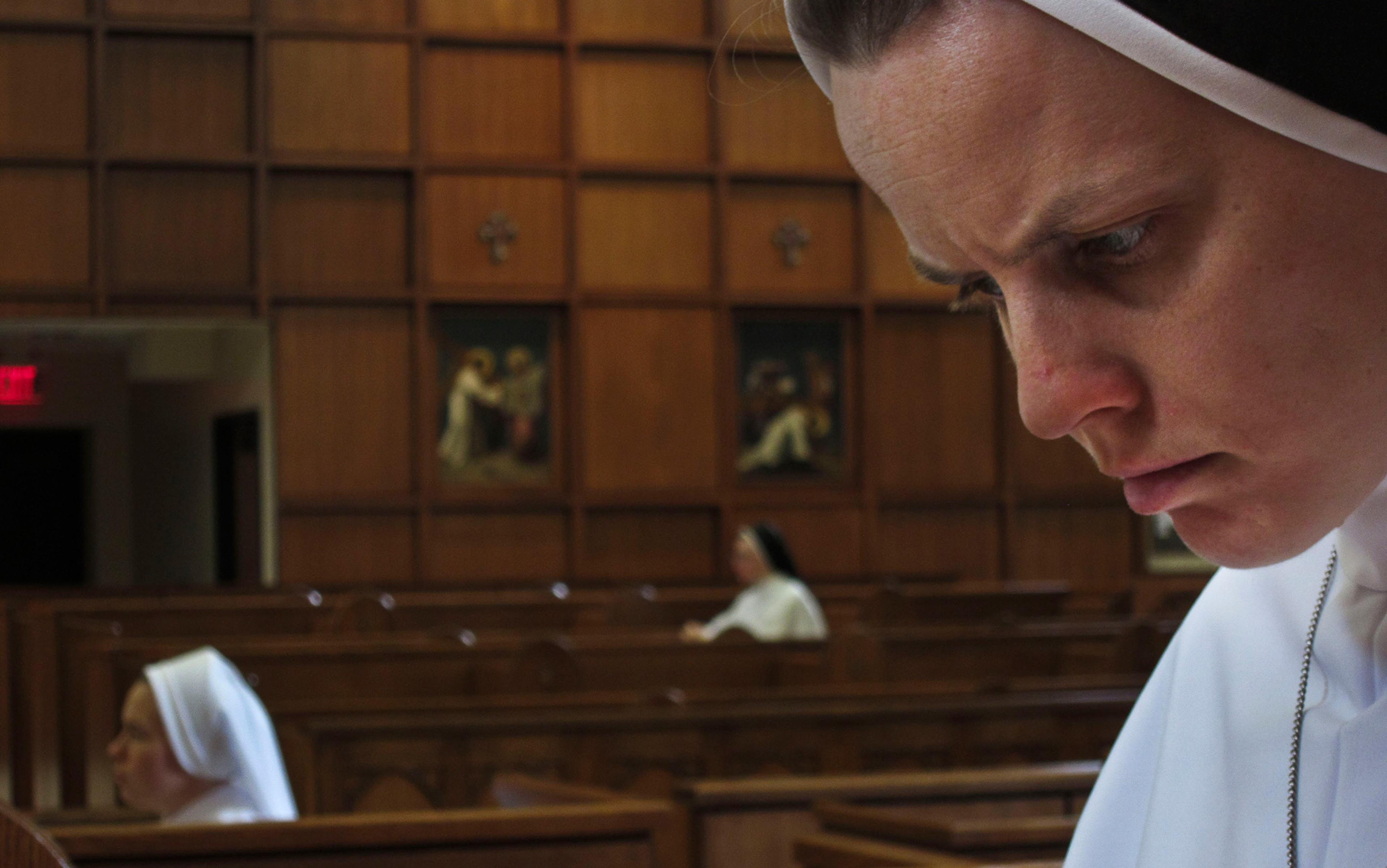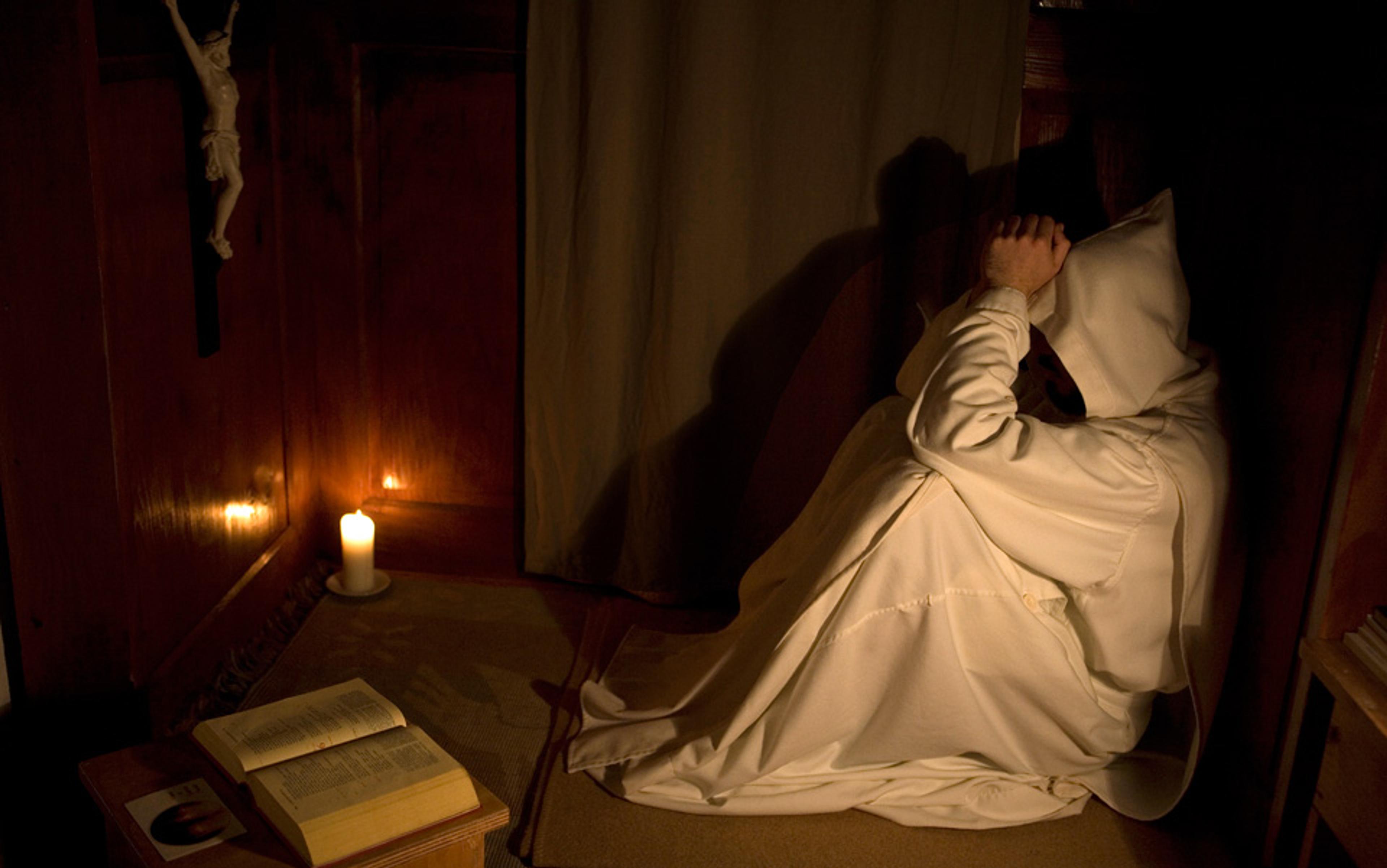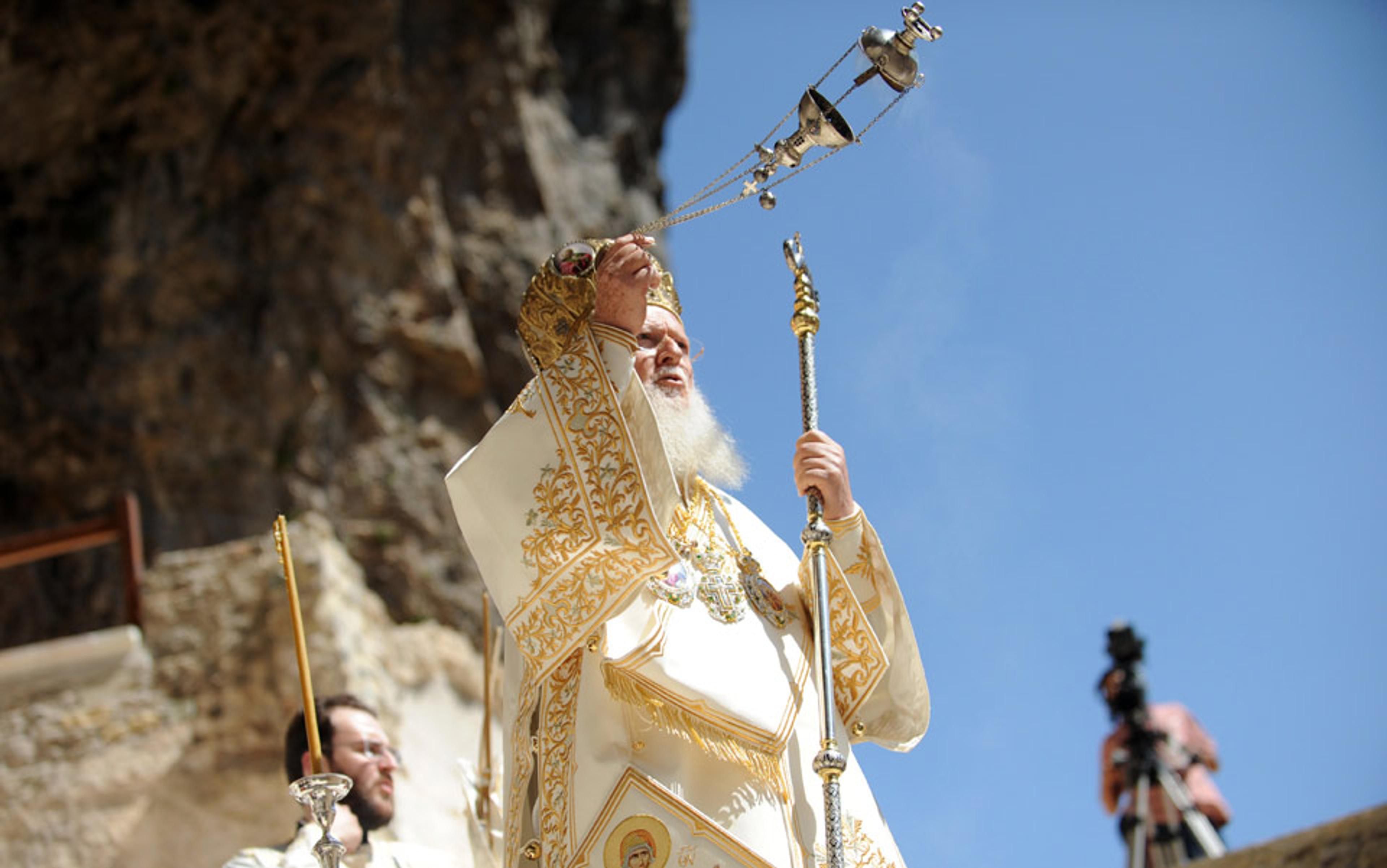I travelled on the night train from Athens and arrived in Thessaloniki six hours later, in a sleepless daze. The small neon-lit café by the bus stop was crammed with plastic tables and chairs. I must have fallen asleep while I waited there, as I found myself being shaken back to consciousness just as the bus for Ouranoupoli — the ‘Sky City’ — was about to depart. The sky was still dark and I scrambled for a seat among young men with scruffy jumpers and goat-beards, priests and monks bearing the cross of their order on their chests, as well as assorted fellow-pilgrims, all quiet and half-asleep. The engine roared; the bus moved. I shut my eyes.
At a little over 2,000 metres (6,660 ft), Athos is one of the tallest mountains in Greece. Sometimes called the ‘Christian Tibet’, it rises from a finger-like peninsula that connects with the rest of the country by a narrow isthmus. For the past 1,200 years a community of Orthodox monks has inhabited the fortresslike monasteries that dot its verdant slopes, in virtual isolation from the rest of the world. Spiritual seclusion has been a tradition here since Hellenistic times, but the monks didn’t arrive until the eighth century AD, when Christian ascetics from Asia Minor came to settle. In 885 Emperor Basil I dedicated Athos exclusively to worship by holy men and forbade settlement by anyone else, including women, holy or otherwise. By then, Orthodoxy was the dominant dogma of the Balkans and most of eastern Europe. Athos became a magnet for neophyte Christians: Bulgarians were the first to settle after the Greeks in 864. Russians and Georgians came in the 11th century, the Serbs in the 12th, the Romanians in the 14th. Today, it is a place of religious enlightenment where miracles are part of everyday life. Many pilgrims swear to having seen levitating ascetics and heard the voices of saints.
I wasn’t swayed by tall stories. Although raised as an Orthodox Christian, I stopped sharing its central beliefs a long time ago. But the Christian ideals and values of my childhood have stayed with me, and I wanted to understand the more esoteric aspects of Eastern Christianity. Curiously, the Orthodox tradition of ‘mental prayer’, known as hesychasm (from the Greek word hesychia, meaning ‘stillness of mind’), has much in common with oriental meditation: a sitting posture, rhythmic breathing, the recitation of a specific mantra, the guidance of a guru, stillness of mind, and the ultimate goal of union with the divine.
At the port of Ouranoupoli, the pilgrims formed a long queue to receive their visitors’ passes. These are issued by the monasteries, which are strict about whom they let in. Athos is a monastic republic ruled by a council of abbots. Ever since Greece annexed Athos from the Ottomans after the First World War, the Greek state has maintained a police garrison in Karyes, the village that serves as the ‘capital’ of Athos, together with a prefect who acts as liaison between the central government and the Holy Community. For all other intents and purposes, supreme authority over Athos resides with the Ecumenical Patriarch of the Greek Orthodox Church, in Constantinople, in Turkey.
There are a couple of shops in Ouranoupoli where you can buy supplies: chocolate, cigarettes and tins of sardines. Some of the pilgrims hurried to fill their rucksacks as if about to depart for the Arctic. Others just sat and waited for the approaching ferry that put-putted in the distance. The ninth-century imperial edict had already filtered the sexes: at the wooden pier there stood only men. A huge yellow board warned in five languages that no women should board the boat or visit the monasteries. The last female we would see for the duration of our stay was the old lady at the kiosk that sold sardines.
The ferry sailed past the monasteries along the western coast. The domed cupolas of churches and the intricate, hivelike arrangements of the monks’ living quarters appeared in glimpses between steep walls. For centuries, pious rulers offered gifts and lands to Athos. In its heyday, the mountain was home to 30,000 monks and held enormous wealth and influence. Kings and emperors, including Stefan Nemanja, founder of the Nemanjić dynasty of medieval Serbia, relinquished power to end their lives as monks on this mountain. And then, in 1389, the glory days of Athos came to an end, following the Ottoman victory at the battle of Kosovo. The Ottomans paid lip-service to the autonomy of the monastic community but confiscated all of its lands beyond the peninsula. Russian tsars picked up some of the slack, but by the mid-20th century the monasteries were financially broke, decrepit and nearly empty.
Praying monks are depicted climbing towards Jesus; those who reach the top enter the heavenly kingdom of light
Redemption came, oddly enough, from the European Union. Following a number of fires, one which almost destroyed the Serbian monastery of Hilandar in 2004, money poured in to rebuild and preserve the unique architecture of the monasteries. The collapse of the Soviet Union saw the return of support of benefactors from Russia and other predominantly Eastern Orthodox nations. In contrast to the rapid secularisation of western Europe, Athos is enjoying a period of religious vigour, and renewed political significance. Vladimir Putin is a frequent visitor.
After a brief stop to transfer into a smaller boat, I circumnavigated the peninsula, arriving at the Iviron Monastery on the eastern coast by late afternoon. The sun saturated the warm ochre of the walls and the lush green of the surrounding forest. A young monk greeted me at the entrance. He invited me in and offered me a glass of raki (a potent alcoholic drink similar to grappa), a loukoumi (Turkish delight) and a cup of strong, sweet coffee. I registered my name and presented a letter from an Athenian bishop who had once practised in the Iviron monastery when he was young: my credentials for requesting an audience with an expert in Orthodox mental prayer.
In the early 14th century, a Greek theologian named Gregory Palamas produced a synthesis of Orthodox philosophy that has defined the theology of the Eastern church ever since. He founded the contemporary tradition of hesychasm, which focuses on achieving experiential knowledge of God. Palamas believed that human beings could never understand the essence of God by employing reason alone. But humans could experience God’s actions (or ‘manifestations’ as he called them), through a retreat into inner prayer. While the Catholic tradition of mental prayer allows the faithful to use icons as aids and regards apparitions as signs from God, Orthodox mental prayer focuses on mental stillness and abstraction, deliberately keeping the mind free of images or thoughts.
Palamas claimed that such prayer gradually builds an increasingly close relationship with God. One of the common themes in late Byzantine iconography is a ladder, representing hesychastic prayer, which connects the earth to the heavens. Praying monks are depicted climbing towards Jesus; those who reach the top enter the heavenly kingdom of light, experiencing love in its perfection. This is the moment of Orthodox theosis, of becoming one with God.
The young monk took my letter to the abbot, then returned with a promise that I could meet the geron (the ‘guru’) after the evening Mass. I was ushered into the incense-scented chapel to wait. The sunlight descending through narrow portholes in the dome began to fade. Monks appeared like shadows, kneeling in front of the icons three times and making the sign of the cross, before retreating to join in the hymns and the liturgy.
I spent a long night in the cell on Athos, drifting in and out of sleep several times. The young apprentice prayed without respite
It was close to midnight before I met the geron. I was brought to his spartan cell, where he was guiding the prayer of a young apprentice. He welcomed me and pointed to a chair in the corner. I could sit there all I wanted, as long as I kept quiet. In the middle of the cell, the apprentice crouched in a low wooden stool and recited the words: ‘Lord Jesus Christ, Son of God, have mercy on me, a sinner,’ again and again. These are the words of the Jesus Prayer, which sits at the heart of the hesychastic tradition. Its first known mention is in the fifth century; when I asked, the monks assured me that the archangel Gabriel whispered it into the ears of the first monk who spoke it.
The apprentice in the cell uttered the first four words while inhaling, and exhaled the rest. The geron sat quietly next to him, occasionally correcting the apprentice’s posture, making the sign of the cross, or repeating the words of the prayer like a conductor correcting the pitch of his one-man orchestra.
Having seen similar practices in Buddhism, Hinduism and the Sufi tradition of Islam, I wondered if these traditions had a historical connection to Orthodox mental prayer. Can it be a coincidence that the Eastern Christians of Constantinople and the Sufi Seljuk Turks of Konya both introduced yogic practices into their worship sometime between the 12th and 13th centuries? By 1279, the Mongols had reconnected India with Europe. The Silk Road reopened and goods and ideas aplenty flowed though it; perhaps oriental meditation became integrated into European practices via this route.
Or could the roots of Orthodox mental prayer be older still? Pythagoreans had been using meditation to escape the world of sensual attachment since the 6th century BC. Hindu traditions have similarly sought to penetrate the veil of illusions known as maya. The 14th-century ideas of Palamas built on the 3rd-century philosophy of Neo-Platonism, which united highly abstract spiritual concepts with monotheistic sensibilities, and concluded that this world was just a play of shadows on the wall of a Platonic cave. Taking this to its logical — or at least theological — conclusion, Palamas argued that to transcend the illusory world one had to block the senses, stilling the mind and journeying within. If there was something novel in Palamas’s mix, it was the Christian idea of universal love — agape — as the ultimate reward and the key to personal salvation.
I spent a long night in the cell on Athos, drifting in and out of sleep several times as I sat, rather uncomfortably, in my little corner. The young apprentice prayed throughout the night without respite, breathing the words in and out while the old geron watched over him. Their spoken words echoed in my ears until they had lost their syntax and meaning. Practitioners of the mental prayer report a feeling of ecstasy at the climax of their experience. They describe their consciousness melting away into something ‘bigger’: the ‘love of God’. In a way, this union resembles the erotic; neuroscientists who studied similar practices claim that the deepest part of the brain, the limbic system, is similarly aroused both during an orgasm and an experience of religious ‘enlightenment’. Perhaps it is not coincidental that Jesus is described in the New Testament as the ‘groom’, and the Church as the ‘bride’.
Just before dawn the wooden bell of the monastery’s chapel began sounding, a call to the monks to cease their prayers and join in the morning Mass. Desperate to get back out into the fresh air, I thanked my hosts and quickly excused myself. There was no way I could take in another Mass. Walking in the opposite direction, I climbed the steps to the highest spot on the wall, and looked out towards the sea. The sky was steadily lightening and a cool breeze carried the rejuvenating scent of salt towards me. Thyme, pine, jasmine and laurel emanated from the monastery’s garden. My face was warmed by the first rays of the sun. I knew that the light that kissed my face came from a star — a great ball of fire fuelled by thermonuclear reactions. That the laurels, the thyme, the bees and the chanting monks were the results of millions of years of biological evolution that had probably begun with a humble bacterium. That I smelled, saw and listened because of electrochemical signals that passed between neurons. That my limbic system was on overdrive.
But despite my knowledge, a sense of mystery remained. Why was the sun so magnificent? Why was the sea so dear? Why did I feel a sense of profound meaning in everything? Perhaps my epiphany owed to nothing more than a second night of sleep deprivation. Nevertheless, I had arrived at a state of mind, possibly not dissimilar to that of the praying monks, where logic failed and gazing at beauty was all that mattered. If that was true then perhaps to know God was simply to look at a rising star, and feel inexplicably moved.






